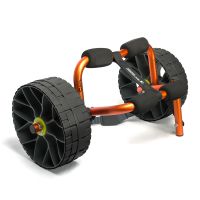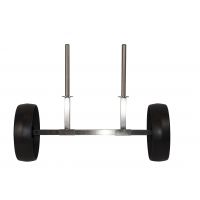Cart is empty
Seats
There are many features and options that the designer can choose to include or omit with the overall decision being dependent on the end benefit or performance that he/she would like the boat to have or do.
The different features to consider when looking to purchase a canoe, kayak, sea kayak or sit-on-top can be found under each heading.
- Hull Shape
- Seats - see below
- Steering Systems
- Rudders
- Hatches
FEATURES EXPLAINED - SEATS
Of all of the features of your kayak, the seat is one of the most important, because if your seat is not comfortable, you are not going to be able to spend extended periods of time in your kayak.
Also, an incorrectly designed seat can lead to medical conditions because of impeded blood flow back from the legs and an unsupported seat position can cause muscular problems in your legs and lower back.
TYPES OF SEATS
There are 2 common types of seat systems a "full pan" seat or an "integrated" seat .
A "full pan" seat is moulded separately to the kayak shell, and is added as another part during the assembly process. In a plastic kayak, you will usually find that it is secured just outside the combing by screws that pass through the kayak shell and into a nut under the seat or an insert that has been moulded into the seat itself. The base of the seat then generally sits directly onto the inside floor of the kayak.
An "integrated" seat can also be known as an "drop-down" seat and this is moulded in as part of the hull. You are able to easily identify this type of seat because it is attached to the sides of the kayak at the combing and is usually the same colour as the kayak.
Full Pan Seat
At Australis, we use a "full-pan" seat because:
- it spreads the weight of the paddler over maximum surface area, therefore eliminating concentrated points of stress on any one area;
- it provides more structural support to the overall shape of the kayak, making your kayak safer;
- it allows pinch weld to be put around the combing of the kayak, covering any potential sharp edges to make the kayak safer by reducing the chance that you can cut yourself.
Integrated Seat
At Australis, we do not use an "integrated" seat because of how they concentrate pressure and stress in just a few places on the kayak.
- Pressure is applied where the top of the seat attaches to the combing. When you sit on this type of seat, the downward pressure pulls the seat at the combing attachment, so all of the weight of the paddler is being exerted upon just a couple of inches of plastic. If there is no extra support under the seat pan, all of the weight of the paddler is exerted on these 2 points.
- Sometimes small supports will be added under the seat to take some of the pressure of the "drop down" at the combing. These features, whilst relieving some of the pressure from the top part of the seat only actually relocates it and concentrates it in a different location. Also, the smaller these supports, the greater the concentration of pressure because of the weight to suraface area ratio.
Our original "Funyak" kayak had an integrated seat.
Whilst it didn't have support pillars under the pan, we did need to place a piece from foam under the seat to reduce some of the pressure felt by the seat where it joined onto the combing.
When we re-made the Funyak mould, we replaced the "integrated" seat with a "full pan seat" because it helped to disperse the weight of the paddler over a greater surface area, rather than concentrating it in a few places, as well as offering more structural support to the overall shape of the kayak, making it safer.
Podded Seat
Whilst not as common as a full pan or an integrated seat, some kayaks are made with a "podded" seat. This is where the seat and backrest are moulded as one piece. The backrest is not able to be adjusted to other angles, and actually forms a "bulkhead" preventing water moving from the cockpit to the back of the boat.
At Australis, we do not use a "podded" seat because:
- there is no backrest that can be adjusted to different angles. The only way that the seating position can be altered is by using pads;
- this style of seat eliminates the capability of storing items behind your seat that might need to be accessed in a hurry (eg: a paddling jacket should the rain or wind come up quickly).
SEAT SHAPE
A well designed seat will help you to maintain correct paddling position and prove more comfortable because:
- it holds your pelvis in a supported position;
- it has a soft, flowing edge on the front of the seat.
The soft, flowing edge (rather than a sharp edge) helps to make your paddling experience more comfortable because it doesn't cut into the back of your legs, and because there is unrestricted blood flow and nerve impulses, sciatic pain and the "pins and needles" feeling are minimised;
- this flowing edge supports your legs and helps you to maintain that slightly bent leg position (essential for injury-free paddling) with ease and comfort. Your legs need to be slightly bent because in this position, hamstring and lower back muscles are not on full stetch. When on full stretch with no impact absorption safety zone, muscles are more vulnerable to injury;
- it has a backrest that holds your pelvis "square", supporting your torso and assisting lower back and abdominal muscles to keep you in an upright position. The backrests should also able to be adjusted to different angles to suit the preferred paddling style of the individual.
- it has a cut-away under the Coccyx.
The Coccyx (or tailbone) will ache if continual pressure is exerted on it.
A poorly designed seat can cause all sorts of short term and long term medical conditions.
Symptoms that you will experience in a poorly designed seat include:
- "Pins & Needles" in your legs from sharp edges cutting off the circulation of blood back from the legs, or putting pressure on nerves that run down your legs;
- Pain or cramping in your lower back or legs because your pelvis is not held in an upright position;
- Pain in your Coccyx from the seat because it isn't "cutaway";
- Walking "hunched over" for a few minutes after getting out of your kayak because you are cramped up.
PADDING
Whilst the inclusion of foam pads on the seat makes it look more comfortable, this can actually give you a sense of false security.
If the actual seat design does not hold your pelvis in the correct biomechanical position and support your torso, you can actually do yourself more harm using this product than the benefits that you will receive from paddling.
The seat should be wider than you are, and you can then customise the boat to suit your paddling style. This will often see slimmer people "pack the boat out" with foam so that they can fit into it more snugly.
© 2013-2026 Australis Canoes. Powered by AVS Online Store

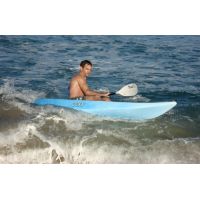
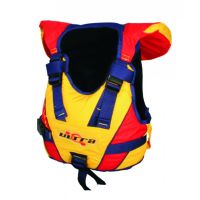
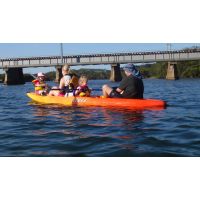
.jpg)
